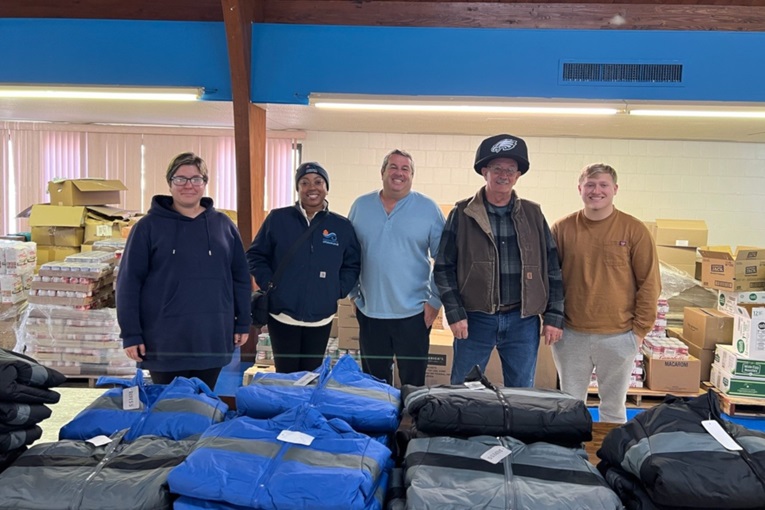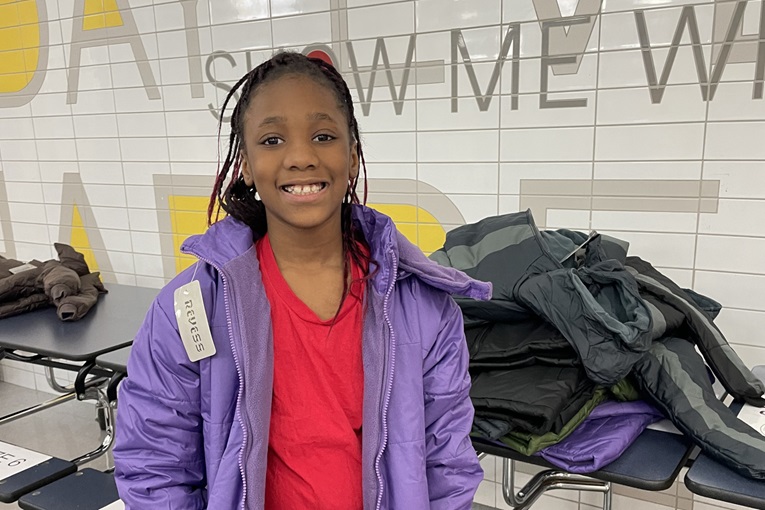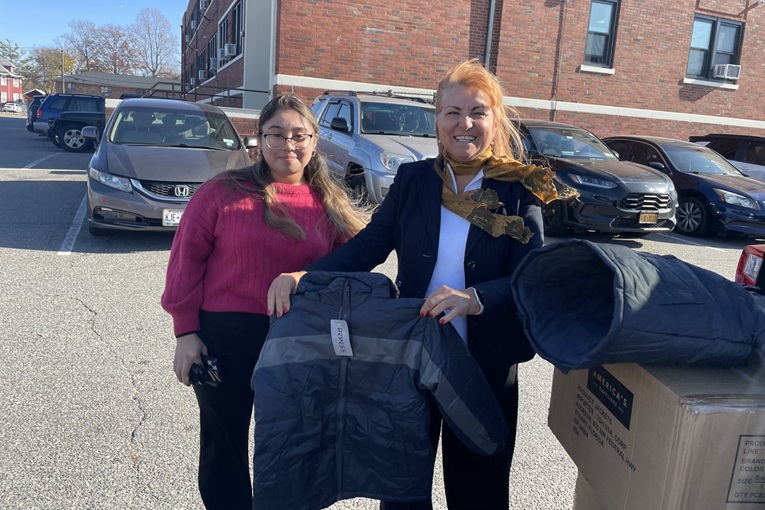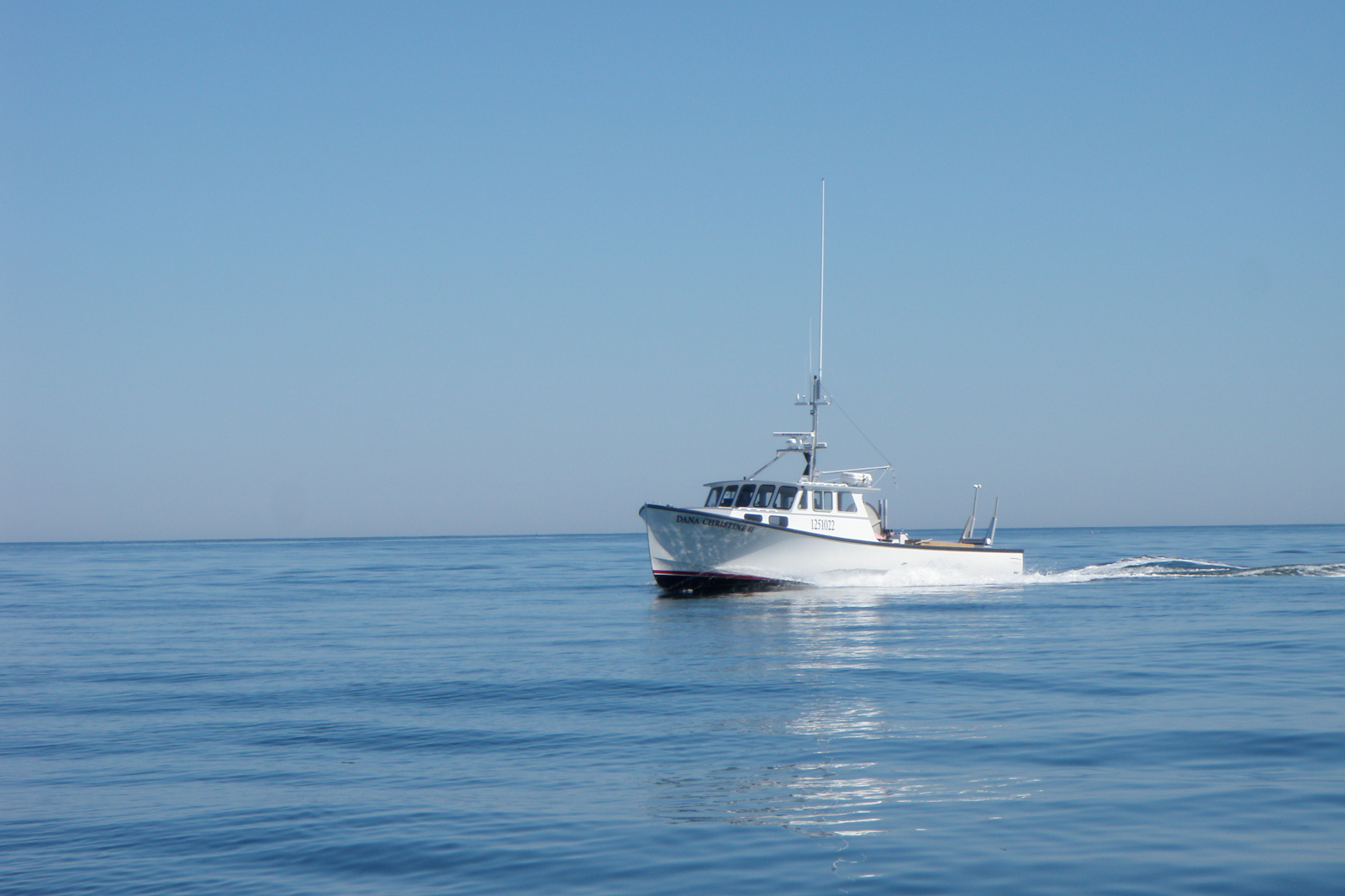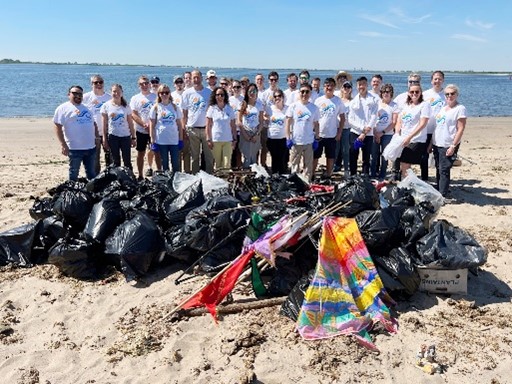Fisheries
Community Offshore Wind respects the local knowledge, interest, expertise, and experience the fishing industry has with the fisheries and marine ecosystem in the offshore wind lease area.
Community Offshore Wind looks forward to working closely and effectively with local and regional fishermen to understand the current and historical fisheries and fisheries operations within the area. We understand that individual fisheries and gear types may have specific characteristics or concerns that are important to consider and incorporate in the successful design of a project. We are committed to working with the fishing industry to understand these specific considerations in order to inform the development, design, and operation of the project to ensure a successful future for the project and the fisheries
We understand that successful relationships are built one at a time, and we are committed to working with the fishing industry to build a successful and sustainable future together as we develop Community Offshore Wind.
For Fishermen and Mariners
Community Offshore Wind’s Fisheries Notices provide fishermen and other interested parties important information about surveys and other activities occurring within the lease area (OCS-A 0539). Notices include locations, timeframes, contact information for survey vessels, and a description of the work being conducted. Active notices are posted here. For more information, please visit our FAQ section below.
Latest update:
-
COSW Fisheries notices 2024
-
COSW Fisheries notices 2023
-
COSW Fisheries Notices 2022
Fisheries Communications Plan
Our Fisheries Communications Plan guides our engagement with the fisheries community and other stakeholders during the project’s development, and will evolve over time in response to diverse community needs and perspectives. We are committed to an adaptive process built on listening and honest conversation. Your voice matters and we are excited to hear from you.
You can get in touch with us here.
Survey FAQs
-
What actions has Community Offshore Wind taken to ensure the survey will avoid conflict with local fisheries?
In addition to our Marine Affairs Manager and Fisheries Liaisons, we have hired two local Fisheries Representatives/Fisheries Technical Advisors who are active participants in the gillnet and sea scallop fisheries, and have decades of on-the-water experience. We are also working with local onboard fisheries liaisons (see Survey FAQ #2) who will be managing geophysical survey vessel communications with the local fishing fleet. Additionally, we conducted a pre-survey risk assessment that has been informed by our conversations with local fishermen to avoid areas of high seasonal concentrations of fixed gear. We have engaged in proactive outreach, in coordination with our local fisheries advisors, to identify those fisheries and participants that might be operating within or transiting through the lease area and potential export cable corridors being surveyed. We have also developed a Fisheries Communications Plan to guide our engagement efforts that is designed to be adaptive and responsive to feedback from fisheries participants and stakeholders.
-
Can fishing vessels operate within the lease area during the survey? What about use of fixed fishing gear?
Yes, fishing vessels are able to operate within the lease area and potential export cable corridors during survey activities. Fishing vessels can coordinate mobile fishing gear operations with survey vessels on a bridge-to-bridge basis. Survey vessels monitor VHF channel 16. Community Offshore Wind also has onboard fisheries liaisons on our geophysical survey vessels. The onboard liaisons are commercial fishermen with local and regional commercial fishing experience, and will manage communications and coordination with the fishing fleet. Survey vessels will be towing an array of geophysical equipment and other sensors astern and approaching vessels are requested to maintain a closest point of approach of 0.5 to 1.0 nautical miles, depending on vessel size.
Fishermen planning to set any fixed fishing gear temporarily in the area are asked to coordinate with our fisheries liaisons to avoid damage to fishing gear or towed survey equipment:
Deirdre Boelke
Phone: 978.518.0638
Email: [email protected]
Michelle Duval
Phone: 919.601.3798
Email: [email protected] -
Why is the project surveying the area?
The Bureau of Ocean Energy Management (BOEM) requires offshore wind energy lease holders to conduct site assessments of seabed conditions in accordance with its Renewable Energy Program Regulations (30 CFR 585). This includes characterizing sediments beneath the seabed, as well as identifying bottom features, obstructions, habitats and items of archaeological interest within the lease area and potential export cable corridors. Geophysical, geotechnical, and benthic survey equipment are used to collect this information, which is used by BOEM and other agencies during regulatory review to evaluate proposed offshore wind projects.
-
What if I experience a loss of fishing gear associated with the project’s survey vessel?
Every effort will be made to avoid and deconflict fisheries activities and potential impacts prior to each survey campaign through direct outreach and communication with the fishing industry. In the event that impacts occur, the project has established a gear loss claim procedure for loss or damage to fishing gear due to survey activities. Community Offshore Wind is committed to processing claims for lost or damaged fishing gear in a timely manner.
For fishermen who experience a gear loss or damage event associated with any vessels contracted to the project, a Gear Loss Claim Form is available here. The fisheries liaisons will be the point of contact for fishermen to assist them with this process, and their contact information can be found below.
Deirdre Boelke
Phone: 978.518.0638
Email: [email protected]
Michelle Duval
Phone: 919.601.3798
Email: [email protected] -
Do you plan to conduct any fisheries surveys?
Yes, we are in the process of developing a fisheries and environmental monitoring plan and anticipate monitoring activities to begin in late 2024. These surveys will increase the knowledge of species and habitats in and around our Project. We recently entered into a formal partnership with the National Oceanic and Atmospheric Administration (NOAA), called a Cooperative Research and Development Agreement. This collaboration will inform development of the project’s monitoring programs and ensure they are effective and scientifically robust. As part of the development of this plan, we have and will continue to actively engage in discussions with stakeholders, and note that the timing may depend in part on NOAA’s ability to issue protected resource permits for these surveys. We are exploring other monitoring methods that could be implemented more quickly, in consultation with regional scientific institutions.
-
How will survey activities affect marine mammals and other protected species?
The equipment (sidescan sonar, shallow sub-bottom profiler, multi-beam echosounder, magnetometer) used for the initial geophysical survey campaign of the lease area and potential cable corridors is not anticipated to harm marine mammals, and survey vessels will comply with vessel strike avoidance zones and any seasonal speed restrictions that may be in place. Survey vessels with sound sources that can be heard by marine mammals and fish have third-party, independent Protected Species Observers (PSOs) onboard who monitor for the presence of protected species during all vessel activities and transits, day and night. PSOs ensure that any required protective measures and avoidance maneuvers are implemented if protected species are observed.
The equipment being used for the current geophysical survey campaign includes a high resolution, medium sub-bottom profiler (a “sparker”) that has been determined by BOEM and NMFS to have limited potential to cause temporary behavioral changes in marine mammals and other protected species in very close proximity to the sound source. To prevent and minimize any temporary behavioral changes, third-party PSOs are onboard the vessel day and night to monitor avoidance and separation zones for marine mammals and other protected species. If marine mammals are detected inside a shutdown zone (<500 m, which is larger than the distance the sound travels), survey activities will pause until animals are determined to have left the area.
We share the public’s concerns about marine mammals and threatened and endangered species, including the North Atlantic right whale, and it is important to know that the project’s goal is to be net positive with respect to biodiversity, as these animals face significant risks from climate change. For more information, please see NOAA’s “Frequent Questions—Offshore Wind and Whales” webpage.
-
How will survey activities affect fish behavior?
Given the types of survey equipment used, available scientific studies suggest that finfish reactions to high resolution geophysical surveys, when they occur, are limited to startle responses or short periods of behavioral change with a quick return to normal behavior. We are aware of reports from captains in the black sea bass fishery indicating that feeding behavior has temporarily changed during some times when surveys were being conducted nearby. Any captains planning to target demersal finfish with hook and line gear while survey vessels are active within the survey area are encouraged to contact our Fisheries Liaisons to request coordination with the survey vessel in advance. Once on the grounds, captains can also hail the survey vessel on VHF 16 and request coordination as practicable on a bridge-to-bridge basis.
-
Is there a chance that survey activities could end earlier?
BOEM has very specific requirements and data standards to ensure that survey data collected will be sufficient to support the environmental and technical review of the project during the permitting process. Given the size of the lease area, weather, and coordination of our surveys with other uses like fishing, it will require a significant amount of time to achieve this. Obtaining a thorough and complete coverage of the lease area during this survey will reduce the need to conduct future surveys of this magnitude, and will provide for smaller, targeted surveys to collect required information, if needed.
-
Are there opportunities for fishermen to participate in the project’s planned survey operations?
Currently, commercial fishermen serve as onboard fisheries liaisons on geophysical survey vessels. The onboard liaison is responsible for managing communications and coordination with the commercial fishing fleet while the survey vessel is active in the project area. A local commercial fisherman is also engaged as a scout vessel to scout for gear in the project area in advance of survey activities. Two local commercial captains are also engaged by the project as Fisheries Technical Advisors/Fisheries Representatives. They advise the marine affairs team on expected fishing activity in the area, represent any concerns from their fisheries to the team, and help make the local fleet aware of upcoming operations. Our marine affairs team and survey team are actively discussing other opportunities to involve commercial fishermen in the project. If you are interested in learning more about opportunities to participate in the project please get in touch with us.
Deirdre Boelke
Phone: 978.518.0638
Email: [email protected]
Michelle Duval
Phone: 919.601.3798
Email: [email protected] -
Will additional survey campaigns be conducted?
A second geophysical survey mobilized in fall 2023 to collect additional data within the lease area and along potential cable routes that will bring energy from the lease area to shore. Geotechnical surveys also commenced in late summer 2023, targeting the coring of the seabed to better characterize sediments below the surface. A benthic survey began in fall 2023 to identify bottom habitat types using cameras lowered to the seafloor as well as sediment grab samples. Additional geotechnical activities are expected in 2024, as well as future surveys focused on identifying locations of unexploded ordnance.
-
Will the data collected on the surveys be shared and available?
The geophysical and geotechnical data collected on these survey campaigns are considered proprietary and commercially sensitive while the project is being designed. Community Offshore Wind is committed to exploring ways to share data as appropriate and recognize that the analysis and use of these data are useful beyond just the Project design and regulatory review. We are also interested in collaborating with science entities and other developers to explore the most effective and efficient ways to make these data available.
-
How deep into the seabed do the acoustic sound waves from sparkers travel?
BOEM guidance recommends imaging of the seabed at least 10 meters (approximately 33 feet) below the depth of the base of turbine foundations or any other project equipment that may penetrate the seabed (e.g., meteorological towers, anchors for jack-up vessels, etc.). In general, offshore wind site investigation activities will image several meters below the maximum depth of any project component (e.g., cables, foundations, etc.).
General FAQs
-
Access: Will commercial and recreational fishing be allowed within the project area?
- Yes, both commercial and recreational fishing will be allowed within the project area.
- The only access limitations anticipated are temporary, rolling, closest-point-of-approach safety areas around construction vessels during installation, construction, and decommissioning of the project
-
Involvement: How can fishermen provide input or get involved in the project?
- The project team welcomes your input and there are different ways to be involved or provide input. If you fish in the area and would like to provide input or share any concerns with the project team, please contact Rick Robins, Marine Affairs Manager below.
- If you want to receive updates on our offshore survey operations, including notices to mariners, fisheries notices, and project updates, please signup below.
- If you have a commercial fishing vessel and would like to discuss opportunities to participate in the project by providing vessel services please tell us about your vessel and interest here.
-
Safety: How will the project promote safe navigation for fishermen fishing in or transiting through the offshore wind array?
- The project will develop and implement an active and effective fisheries communications plan to keep the fishing industry informed of offshore operations throughout the site assessment, construction, and operations phases of the project.
- The project team will develop a marking and lighting plan for all of the structures within the project area to ensure safe day and night visibility in accordance with BOEM guidelines and USCG regulations.
- The project team will also consult directly with the fishing industry, other mariners, and USCG to inform its plan to use AIS to mark structures electronically within the project area to promote safe navigation.
- The project will work with the fishing industry to develop best practices guidance to promote safe fishing activity within the array, and will incorporate this guidance in its safety management plan.
- The project will work with fishermen to develop and support training programs to promote safe navigation and fishing operations within the proje
-
How will the project avoid and minimize impacts to marine fisheries?
- Lease OCS-A 0539 was identified through BOEM’s intergovernmental task force process which began in 2010 and included input from stakeholders, tribes, local, state, and federal government. BOEM substantially amended the lease area between the proposed and final sale notices based on input from the sea scallop and surfclam commercial fishing industries and NMFS, by shifting and redacting portions of the lease (and adjacent lease area OCS-A 0540 in the proposed sale notice) to eliminate overlaps with mid-shelf scarp habitat, fish habitat identified in the NJ Prime Fishing Areas dataset, and areas of higher surfclam and sea scallop fishing activity.
- The project team will engage directly with the fishing industry to collect information and understand the detailed considerations specific to individual fisheries and gear types to inform the design process.
- The project’s fisheries team is aware of the sea scallop dredges and hydraulic surfclam dredges that are fished within the area. The project team is committed to integrating specific fisheries details, including these gear attributes, early in the design of the project in order to design the project for a successful and sustainable outcome for clean power generation and marine fisheries.
- The project design team will plan to bury the cables to a depth determined by a comprehensive Cable Burial Risk Assessment (CBRA.) The risk assessment will consider sediment type, bottom mobility, and potential fisheries interactions, along with other physical and environmental considerations.
-
Monitoring: How will the developer monitor any changes in the fisheries before and after the installation of the project?
- The project will develop a pre and post construction fisheries monitoring plan in consultation with the fishing industry, state agencies, NMFS, BOEM, and regional academic institutions.
- The developer will engage fishermen in the design and implementation of the monitoring plan, and will explore cooperative research frameworks and opportunities in the development of the plan.
-
Timing: When will the project begin survey operations and in-water construction activities in the lease area?
- Survey operations may begin in the lease area and potential export cable corridor routes later in 2022, following regulatory consultation and review. Community Offshore Wind will commence consultations in support of this effort in Q2 and Q3 of 2022.
- Community Offshore Wind will develop the Construction and Operations Plan (COP) for the project, in consultation with stakeholders and state and federal regulators during the course of a multi-year regulatory review process with BOEM and state and federal regulators.
-
Gear Loss: What should I do if I believe my gear has been lost or damaged?
- Every effort will be made to avoid and deconflict fisheries activities and potential impacts and prior to each survey campaign through direct outreach and communication with the fishing industry. In the event that impacts occur, the project has established a gear loss claim procedure for loss or damage to fishing gear due to survey activities. Community Offshore Wind is committed to processing claims for lost or damaged fishing gear in a timely manner.
- For fishermen who experience a gear loss or damage event associated with any vessels contracted to the project, a Gear Loss Claim Form is available here. The fisheries liaisons will be the point of contact for fishermen to assist them with this process, and their contact information can be found below.
-
Is there the potential the lease area could be used for oil and gas exploration?
Not at all – Community Offshore Wind is solely committed to the sustainable development of offshore wind as a renewable source of clean energy. Additionally, there is a specific provision in Section 2(c) of the lease agreement that states the lessee is not authorized to conduct activities related to or associated with offshore oil and gas development, other seabed minerals, or renewable energy sources other than wind. See the Lease Agreement here.
